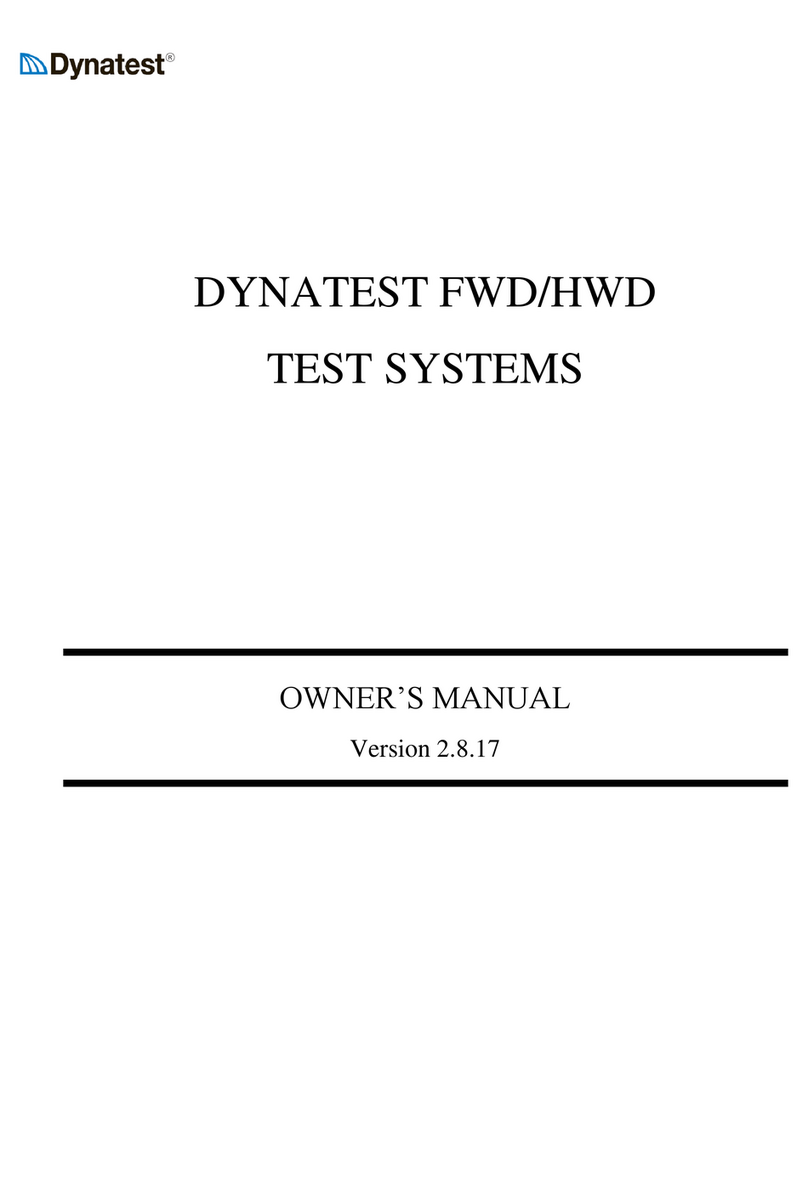
Dynatest 1295 Version 1.07 v Sep 2017
TABLE OF CONTENTS
SECTION DESCRIPTION PAGE
Section 4 Operation
4.1 Test Information Menu......................................................................37
4.1.1 Editing Information.................................................................38
4.1.2 Loading Default .....................................................................38
4.1.3 Recalling a Template.............................................................38
4.2 Settings............................................................................................39
4.2.1 Control Parameter Overview.................................................40
4.2.1.1 Test Type........................................................................40
4.2.1.1.1 Standard ...........................................................40
4.2.1.1.2 Chirp .................................................................40
4.2.1.1.3 Target Speed ....................................................40
4.2.1.1.4 Speed Range....................................................40
4.2.1.1.5 Test Suspension Speed ....................................40
4.2.1.2 Test Cycle Sequence......................................................40
4.2.1.2.1 Manual..............................................................41
4.2.1.2.2 Auto ..................................................................41
4.2.1.3 Test Wheel Sequence ....................................................41
4.2.1.3.1 Left....................................................................41
4.2.1.3.2 Right..................................................................41
4.2.1.3.3 Alternate (L-R)...................................................41
4.2.1.3.4 Alternate (R-L)....................................................41
4.2.1.4 Test Start.......................................................................42
4.2.1.4.1 Start Test by Pendant at DMI Start....................42
4.2.1.4.2 Start Test by Pendant after DMI........................42
4.2.1.4.3 Start Test on Distance From DMI ......................42
4.2.1.4.4 Auto Test Start Distance....................................42
4.2.1.5 Test Stop.......................................................................42
4.2.1.5.1 Pendant.............................................................42
4.2.1.5.2 Distance............................................................42
4.2.1.6 Test Time Parameters ...................................................43
4.2.1.6.1 Time parameter 1..............................................43
4.2.1.6.2 Time Parameter 2..............................................43
4.2.1.6.3 Time Parameter 3..............................................43
4.2.1.6.4 Time Parameter 4..............................................43
4.2.1.6.5 Time Parameter 5..............................................43
4.2.1.7 DMI –Distance Measuring Instrument ...........................43
4.2.1.7.1 DMI (Units).........................................43
4.2.1.7.2 DMI Starting Distance.........................43
4.2.1.7.3 Count UP or Down..............................43
4.2.1.8 Miscellaneous...............................................................
4.2.1.8.1 System Units..............................................................44
4.2.1.8.1.1 US/English .....................................................44
4.2.1.8.1.2 Metric.............................................................44
4.2.1.9 Test Watering ................................................................44
4.2.1.9.1 Wet ...................................................................44
4.2.1.9.2 Dry....................................................................44
4.2.1.9.3 Pre-wet..............................................................44





























